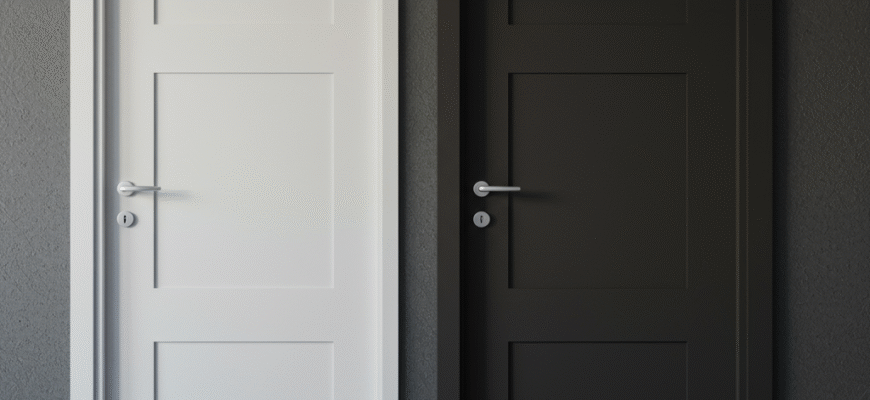Content
From Cave Mouths to Crafted Wood
In the earliest days of human habitation, the concept of a ‘door’ was rudimentary at best. Openings in caves or simple shelters might have been covered with animal hides, heavy furs, or woven mats. These weren’t doors in the way we understand them now; they were basic barriers against the elements, wild animals, and perhaps unwelcome gazes. The primary goal was simple demarcation – inside versus outside. Security was minimal, relying more on the location of the shelter or the vigilance of its inhabitants. As settlements became more permanent, so did the need for more substantial closures. Early agrarian societies started using rough-hewn planks of wood or even slabs of stone, pivoted crudely at the top and bottom or slid into place. These were heavy, unwieldy, but offered a greater degree of permanence and protection than hides. The technology was basic, often relying on gravity and simple propping mechanisms. The idea of a hinged, swinging door was still some way off for most ordinary dwellings.Ancient Ingenuity Takes Shape
The great civilizations of antiquity brought significant advancements. In Egypt, while wood was relatively scarce, tombs and temples featured more sophisticated wooden doors, often made from imported timber like cedar. They developed pivot hinges – simple pins at the top and bottom fitting into sockets in the lintel and threshold – allowing the door to swing. Basic locking mechanisms, often complex wooden bolts requiring specific ‘keys’ to manipulate tumblers, also emerged, signaling a growing concern for securing valuables and sacred spaces. The Greeks and Romans further refined door construction. Roman engineering prowess led to more widespread use of metal, including bronze for hinges and sometimes even for entire doors on important public buildings or temples. They mastered joinery techniques, allowing for stronger, more stable wooden doors. The concept of framed doors with panels became more common, adding both strength and aesthetic appeal. Roman homes, especially those of the wealthy, often featured multiple doors, creating distinct rooms and enhancing privacy – a relatively new concept.Verified Fact: Roman engineering significantly improved door hardware. They developed more sophisticated bronze pivot hinges and early forms of metal locks and keys. Some monumental structures even featured large, heavy bronze doors, showcasing their metalworking skills and the importance of the entrance.
Medieval Fortification and Craftsmanship
The Middle Ages, particularly in Europe, saw the door evolve significantly in response to the era’s focus on defense and security. Castle doors were masterpieces of fortification. Think massive, thick oak planks held together with iron studs and bands. These weren’t just barriers; they were integral parts of the defensive structure. Often, they were doubled, with an outer gate or portcullis providing an additional layer of protection. The drawbridge itself can be seen as a form of dynamic gatekeeping, a movable threshold. Beyond castles, cathedrals and churches featured grand, often elaborately carved doors. These served not only as entrances but also as symbolic portals, adorned with religious scenes or intricate patterns. Craftsmanship flourished, with woodworking guilds perfecting techniques for creating large, stable, and aesthetically pleasing doors. While security remained important, the artistry involved signaled the door’s growing role as an architectural statement.Renaissance, Refinement, and the Rise of Style
The Renaissance brought a renewed focus on aesthetics, proportion, and classical design. Doors became increasingly ornate, reflecting the architectural styles of the time. Skilled artisans created intricate carvings, inlays, and panel designs. Different types of wood were chosen for their beauty and workability. The integration of glass into doors began, initially as small panes or ‘lights’ in the upper sections, allowing light to enter hallways while maintaining privacy and security. During the 17th and 18th centuries, door designs continued to evolve. Styles like Baroque and Rococo influenced ornamentation. The development of more sophisticated locks and hinges improved functionality and security. Standardized designs began to emerge, although bespoke craftsmanship remained highly valued for prestigious buildings and homes.The Impact of Industry
The Industrial Revolution fundamentally changed door manufacturing. Mass production techniques made doors more affordable and accessible. Standardization of sizes became common, simplifying construction processes. New materials, like cast iron and later steel, began to be used, particularly for industrial buildings, fire doors, and high-security applications. Machine tools allowed for more precise joinery and finishing on a large scale. While this democratized access to decent doors, it also led to a decline in highly individualized craftsmanship for everyday applications. However, the era also saw significant innovation in locking mechanisms, with inventors like Linus Yale Jr. patenting cylinder locks that offered unprecedented levels of security compared to older warded locks.The Modern Portal: Variety and Technology
Today, the sheer variety of doors is staggering. We’ve moved far beyond simple wood planks. Modern doors come in a vast array of materials:- Wood: Still popular for its natural beauty and insulation, available in solid wood or engineered cores with veneers.
- Steel: Known for strength, security, and durability, often used for exterior doors.
- Fiberglass: Offers a good balance of durability, insulation, and aesthetics, often mimicking the look of wood.
- uPVC: Low maintenance, weather-resistant, and often used for patio or utility doors.
- Composite: Combining materials like wood, PVC, insulating foam, and GRP (glass reinforced plastic) for high performance in terms of strength, security, and thermal efficiency.
- Glass: Used extensively in sliding doors, French doors, and commercial entrances, often using tempered or laminated safety glass.









